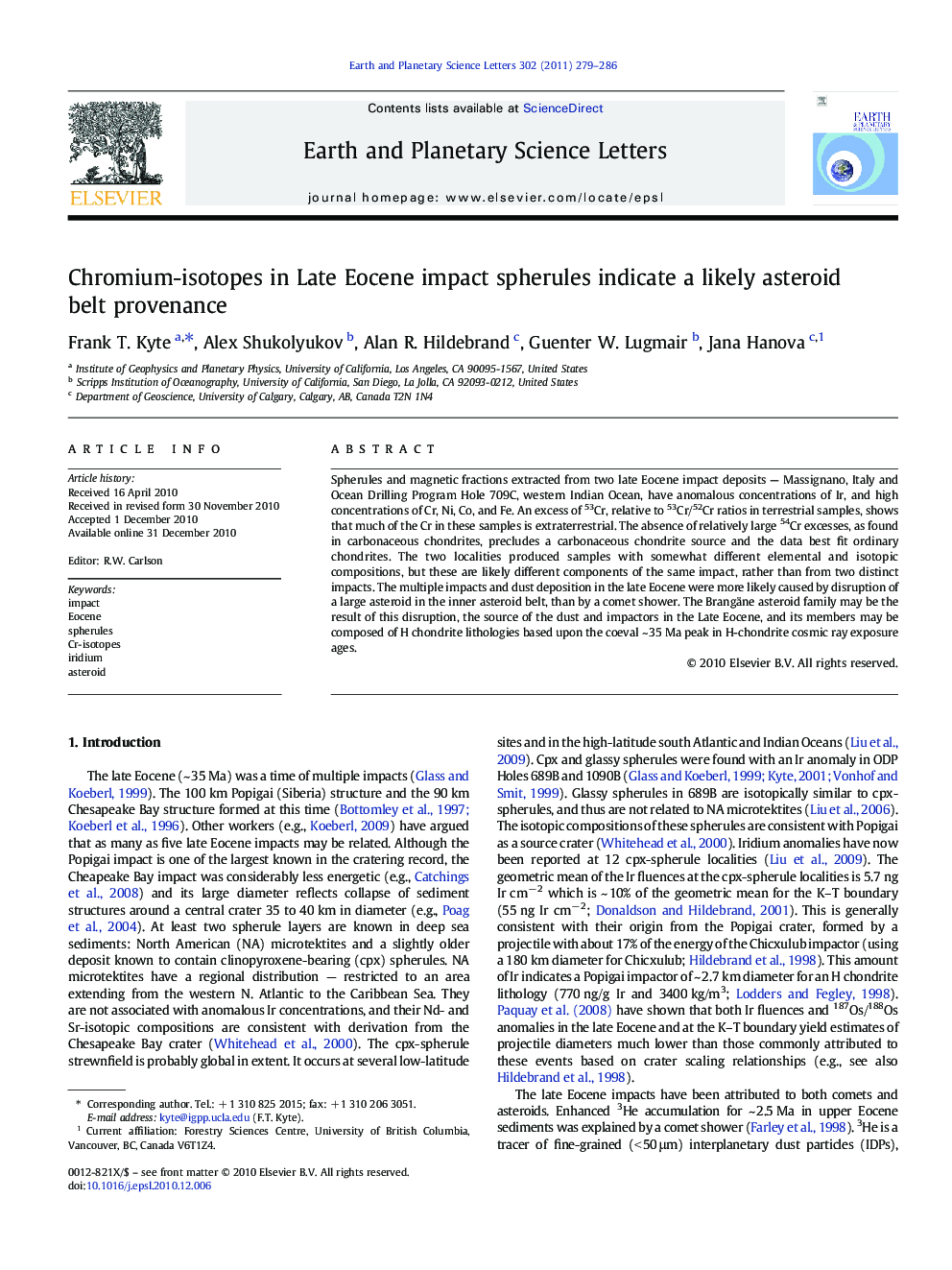| کد مقاله | کد نشریه | سال انتشار | مقاله انگلیسی | نسخه تمام متن |
|---|---|---|---|---|
| 4678095 | 1634835 | 2011 | 8 صفحه PDF | دانلود رایگان |

Spherules and magnetic fractions extracted from two late Eocene impact deposits — Massignano, Italy and Ocean Drilling Program Hole 709C, western Indian Ocean, have anomalous concentrations of Ir, and high concentrations of Cr, Ni, Co, and Fe. An excess of 53Cr, relative to 53Cr/52Cr ratios in terrestrial samples, shows that much of the Cr in these samples is extraterrestrial. The absence of relatively large 54Cr excesses, as found in carbonaceous chondrites, precludes a carbonaceous chondrite source and the data best fit ordinary chondrites. The two localities produced samples with somewhat different elemental and isotopic compositions, but these are likely different components of the same impact, rather than from two distinct impacts. The multiple impacts and dust deposition in the late Eocene were more likely caused by disruption of a large asteroid in the inner asteroid belt, than by a comet shower. The Brangäne asteroid family may be the result of this disruption, the source of the dust and impactors in the Late Eocene, and its members may be composed of H chondrite lithologies based upon the coeval ~ 35 Ma peak in H-chondrite cosmic ray exposure ages.
Research Highlights
► We report analyses of samples from a late Eocene (35 Ma) impact spherule deposit.
► Spherules are enriched in Ir, Co, Ni and Cr and have anomalous Cr isotopes.
► The impacting projectile was probably an ordinary chondrite asteroid.
► The impact and an associated 3He anomaly may be from an asteroid disruption.
► Potential sources include the Brangäne asteroid family and H chondrites.
Journal: Earth and Planetary Science Letters - Volume 302, Issues 3–4, 1 February 2011, Pages 279–286